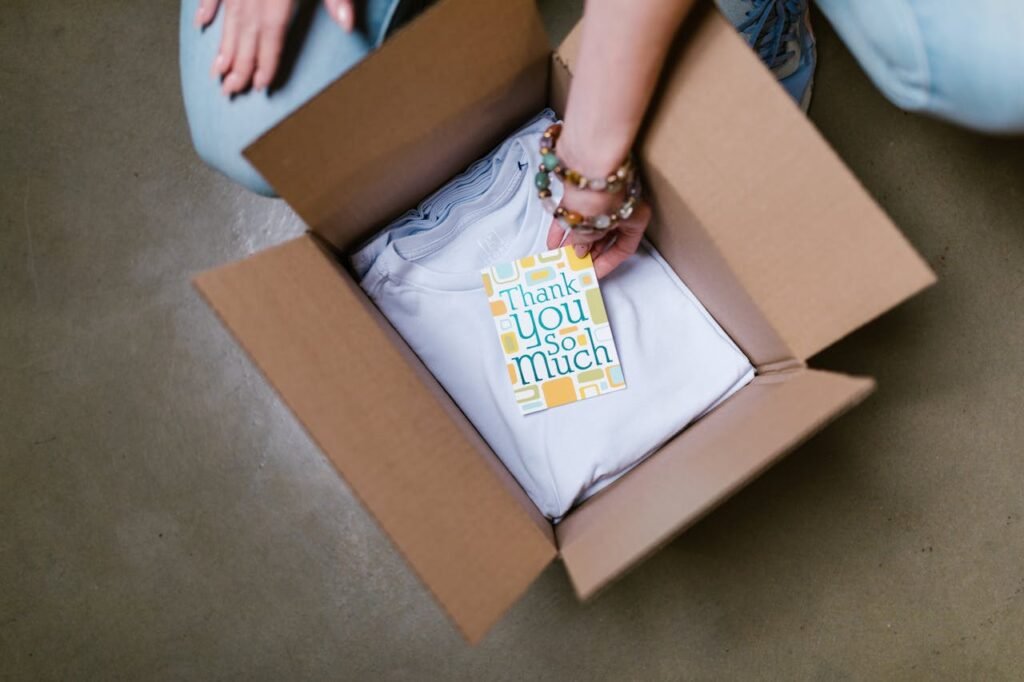Okay, just go ahead and imagine this for just a second; someone orders from a small business, tracks the package like a hawk for days, and when it finally lands on their doorstep, they tear it open with the excitement of a kid on Christmas morning. Only to find a sad, crumpled mess inside a box that looks like it lost a wrestling match. Not exactly the “wow” moment anyone was hoping for.
You know how Amazon packages are known for looking dull, boring, and sad? Well, any big-box ecommerce and chain? Well, that’s the vibe. If you want successful business operations, disappointing your customers is literally the exact opposite of what you want to do.
Well, it’s really easy to brush packaging off as just something to get a product from A to B. No big deal, right? Except it’s a very big deal. Like, a massive one at that! It really can’t be stressed enough that packaging can quietly make or break a small business. Ignore it, and the hidden costs sneak in, settle down, and start eating away at profits like mice in a pantry (okay, that analogy might be a little cute and silly, but just bear with it).
Table of Contents
Product damage is a silent profit thief
One broken item? Annoying. But a few more? Expensive. Like, really expensive! Honestly, before long, damaged goods are nicking a chunk out of the bottom line. Refunds, replacements, and extra shipping costs it all add up fast. You really have to keep in mind that customers have high expectations. They want their order to arrive looking like it just floated down from heaven, not dragged through a hedge backwards. One bad experience can send them running straight into the arms of a competitor who promises a little more polish.
Smart packaging is not about gold-plated boxes or diamond-studded tape. It’s about choosing materials that actually do the job. It’s about showing that the business cares enough to protect what it worked so hard to create.
Unboxing is a whole event now
Once upon a time, opening a package was quick, messy, and forgettable. Now? It’s a performance. Well, it’s pretty much expected to be a performance, and you’re expected to do something a little more on the lavish side. Besides, people record it, share it, and celebrate it. A good unboxing experience is like a free advert beamed straight into their followers’ feeds.
If the packaging feels like an afterthought, it tells the customer they were an afterthought, too. No one wants to feel like they spent their money on something that barely made it over the finish line. But really, beautiful packaging feels like a mini celebration.
It makes customers proud of their purchase. It makes them want to do it all over again. And if the packaging is a disaster? Best believe it’ll end up on social media too, just not in the way any brand hopes for.
A brand is only as strong as its packaging
Oh yeah, so this is just a major one; first impressions are brutal. It doesn’t matter how glossy the website is or how charming the emails are. If the package shows up looking like an after-school art project, that’s the story customers remember.
Just think about it like this: packaging is a handshake. It’s the business’s way of saying, “You made a brilliant choice.” Get it wrong, and the only message sent is, “We didn’t try very hard.” Plus, you should remember that consistency builds trust. Trust builds loyalty. And loyalty keeps small businesses alive. Shoddy packaging breaks that chain before it even gets started.
Cutting corners can backfire badly
It might seem clever to save a few pounds by choosing the cheapest packaging possible. In reality, it’s a shortcut straight to extra expenses, unhappy customers, and a brand reputation wobblier than a jelly on a trampoline. You might know this already, but customers are sharper than ever when it comes to sustainability, too. So, yeah, they spot unnecessary plastic and oversized boxes from a mile away. They want to feel good about their choices, not guilty.
However, with all that said, choosing smart, sustainable packaging shows customers they’re buying from a business that actually thinks things through. They’d rather support a good business, one that thinks of the world, their customers, and well, beyond (since most companies don’t do that). So, ideally, companies like Packee make it simple for small businesses to level up their packaging without needing a second mortgage, oh, and they have eco-friendly packaging, of course.
Small problems turn into full-blown disasters
Well, at the start, a few broken orders might feel manageable. You apologise, replace, and move on. But scale things up a bit and suddenly, those small cracks start looking like gaping chasms.
But more orders mean more chances for packaging to go wrong. More complaints. More refunds. More five-minute phone calls that stretch into half-hour apologies. Staff get frazzled. Systems start buckling. Customers get fed up and quietly disappear. Okay, basically, it’s more everything and less everything at the same time, which is what you do not want when it comes to your business.
Okay, with all that said, sorting out packaging early is one of the best things a small business can do for future sanity. It’s a lot easier to build strong foundations than to keep patching up cracks later.
Packaging is a secret handshake that customers never forget
Well, think of it like this: in a crowded market, standing out feels impossible sometimes. Good packaging is one of those magic little touches that makes customers sit up and take notice. It doesn’t have to be flashy. It just has to be thoughtful. A sturdy box that opens cleanly. Branding that feels exciting. A layout that says, “We cared enough to make this special.”
So, at the end of the day, when customers feel valued, they remember. They recommend. They come back.
But overall, packaging isn’t just about keeping a product safe. It’s about telling customers they made the right choice. It’s about building trust before they even get to what they ordered. Skipping it might save a bit of cash today, but it costs so much more in the long run. Lost customers. Damaged reputations. Frayed nerves. It all piles up. Which, again, it’s just not what you want. So please be mindful and put more thought into this, because it does matter.











